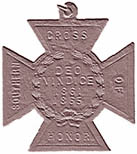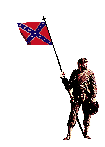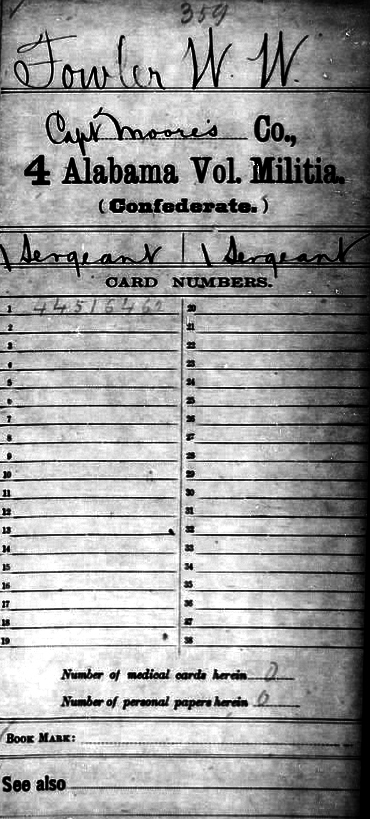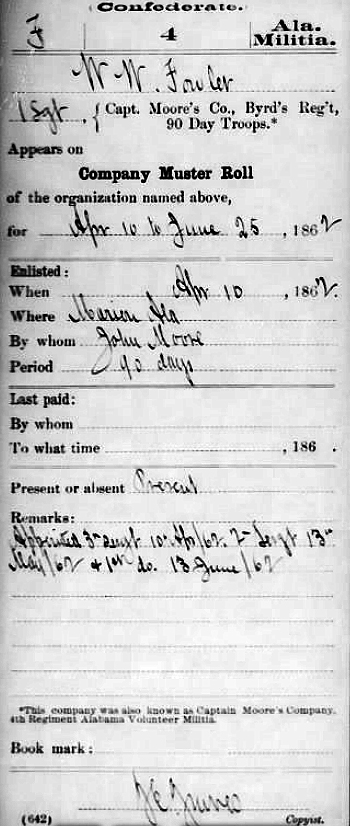|
Wiley William Fowler Jr Mexican - American War 1846
- 1848 Provided by: Helen
Allen |
|
Center Ridge Cemetery Maud
Bowie Co TX |
|
|
| Return Fowler Web Page | Return to History Page |
Updated Jan 27, 2006
|
Wiley William Fowler Jr Mexican - American War 1846
- 1848 Provided by: Helen
Allen |
|
Center Ridge Cemetery Maud
Bowie Co TX |
|
|
| Wiley Fowler Jr's (Son of Wiley Sr & Rachel [Lewis] Fowler) Mexican/American War Record 
 |
|
|
|
|
| Military Service of Wiley W Fowler:
Militia: History of Coosa County, Alabama, Record Information provided by: Buried: Center Ridge Cemetery Maud Bowie Co TX Notes: |
|
|
Story of Wiley's Mexican American War Service as
told I do have Wiley's Mexican War record. It is not a pension application which would have included a lot more valuable
information. What I have includes his application for bounty land which he
received in Bibb County, and some information on his service at Tampico,
Mexico, his discharge and several other papers. A couple of them are almost
impossible to read because the copies are so weak, I think they are affidavits.
He was a good friend of James Wilson Stanley and they served in the Mexican War together, each making signed affidavits for the
other's file. James Wilson Stanley is also my ancestor. An interesting
thing in James Wilson Stanley's file is the affidavit that Wiley swore to.
He said that his correct name was William Wiley Fowler, but his Mexican War
record and discharge is recorded as Wiley W. Fowler. Wiley also served in the Civil War according to my mother's recollections of Where the records are: National Archives and Records Administration ORDERING FROM: |
|
|
1st Sgt. Wiley W Fowler
Jr
(CSA) |
|
|
"The Southern Cross of Honor" 

 |
|
|
Civil War: Sergeant W. W. Fowler enlisted: Roster - Perry Guards "Muster Roll of Perry Guards."
|
|
|
|
Wiley William Fowler Jr. Born: 1824 Spartanburg Co SC Died: 1904 Maud Bowie Co TX Buried: Center Ridge Cemetery Maud TX [Alabama Militia, Mexican War, Civil War] Cousin Marlene Walker last visited Wiley's resting place in September
of 2003, and had this to share about the condition of the Grave Stone: |
|
UP^
Civil War Service
Records
UP^ |
|
 |
 |
| UP^ | |
|
Wiley W
Fowler was not in the Eutaw Co. D A Brief History of the "Eutaw Rangers" On May 25, 1846, shortly after war was declared against Mexico, Judge Sydenham Moore enrolled a company of volunteers in this law office, which still stands on a corner of the courthouse square in Eutaw, Alabama. On June 2, they left Finche's Landing on a steamboat bound for Mobile. At Mobile, the company was mustered into service for 6 months but owing to a Congressional requirement that all volunteers serve for no less than 12 months, they were disbanded and re-enrolled for the longer period of time. On June 29, 1846, as part of Colonel John R. Coffey's 1st Regiment of Alabama Volunteers, the Eutaw Rangers departed Mobile aboard the steamboat Fashion. They arrived at Brazos Santiago Pass, Texas, near the mouth of the Rio Grande, on July 4, 1846. After camping for a short time on barren, windswept Brazos Island, the regiment moved to Camp Belknap, a rattlesnake infested hillock overlooking the Rio Grande. Here, they camped until late August, when they were transferred upriver by steamboat to Camargo, Mexico. When General Zachary Taylor's army departed Camargo for Monterey in September 1846, the Alabamians were left behind to look after sick soldiers. They resented not being allowed to fight and protested in vain to General Taylor. In November they were sent back up the Rio Grande and transported to Tampico, to form part of the garrison of that town, recently captured by the U.S. Navy. They arrived shortly before Christmas, 1846. On March 9, 1847 the Eutaw Rangers were among the 10,000 troops landed at Vera Cruz as General Winfield Scott began his invasion of Central Mexico. For three weeks the Americans laid siege to the city, bombarding it with cannon fire day and night. (See picture, left.) On March 29, 1847, Vera Cruz capitulated. Afterward, under the command of General Quitman, the Alabama Volunteers were sent on an expedition to Alvarado, to find fresh horses and cattle for Scott's army. As a result, they arrived back at Vera Cruz after the bulk of the army had departed. They missed the Battle of Cerro Gordo by a day. After briefly forming part of the garrison at Jalapa, the Alabamians, along with several other volunteer regiments, were marched back to Vera Cruz, where they boarded vessels bound for the United States. The Alabama Volunteers arrived at New Orleans in late May and were mustered out of service. The Eutaw Rangers returned to Greene County on the evening on June 2, 1847, one year from the day they had left. A few days later these "Heroes of '46" were feted by the citizens of Eutaw at a grand barbecue. During the Civil War, both Sydenham Moore and Stephen Hale led troops
in battle as officers in the Confederate Army. Both were killed in
action. Hale County is named for Stephen Hale, who is buried in Eutaw's
Mesopotamia Cemetery. Sydenham Moore is buried in the New Greensboro
Cemetery in Greensboro, Hale County, Alabama. Since the Civil War,
Greene County's contribution to the Mexican War has been largely
forgotten. Wiley, was originally, a private in Company C (Coleman's Company), First Regiment of Alabama Volunteers, which was formed in Perry County, AL in May 1846 and subsequently mustered into federal service at Mobile on June 15, 1846. Although the company was mustered out of service at New Orleans on May 27, 1848, Fowler became ill while serving in Mexico and was discharged from service earlier. This occurred at the hospital in Tampico about April 4, 1847. This information is from the book, "Alabama Volunteers in the Mexican War," which was published by the Descendants of Mexican War Veterans, an organization you can join (prospective members may have either a direct or collateral relationship to a veteran). To learn more, see: http://www.dmwv.org/ |
| What
was the US/Mexican War about?
The Mexican-American War was the first major conflict driven by the idea of "Manifest Destiny"; the belief that America had a God-given right, or destiny, to expand the country's borders from 'sea to shining sea'. This belief would eventually cause a great deal of suffering for many Mexicans, Native Americans and United States citizens. Following the earlier Texas War of Independence from Mexico, tensions between the two largest independent nations on the North American continent grew as Texas eventually became a U.S. state. Disputes over the border lines sparked military confrontation, helped by the fact that President Polk eagerly sought a war in order to seize large tracts of land from Mexico. DATES OF CONFLICT:
|